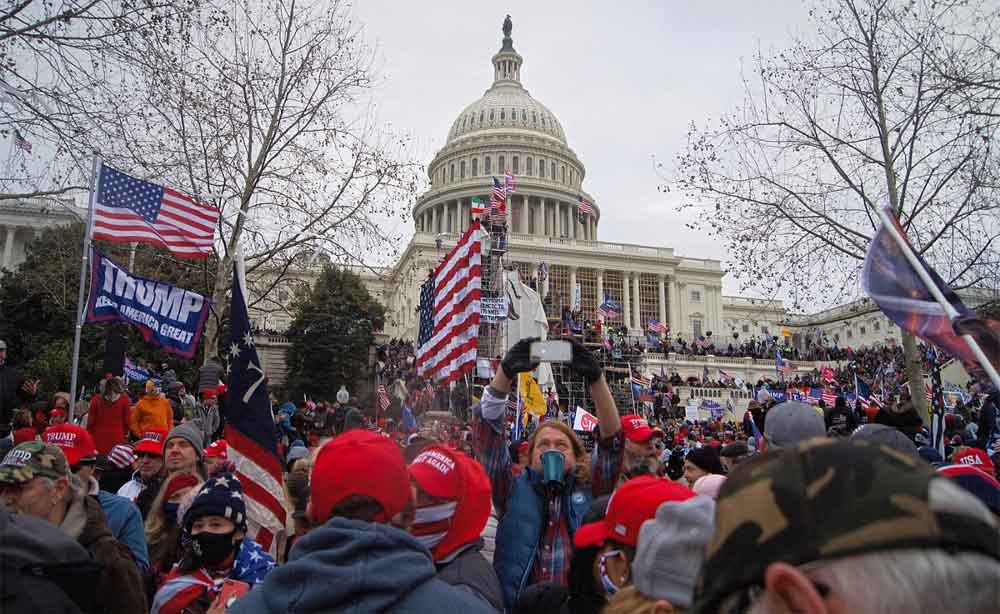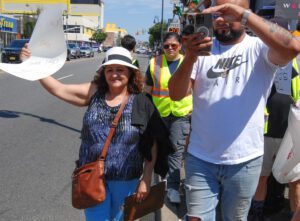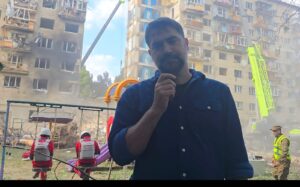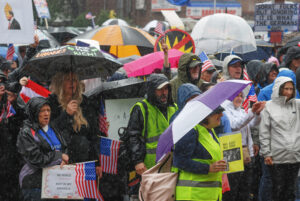By Susan Drucker and Gary Gumpert
Six Long Islanders were among the more than 750 arrested nationwide for the assault on the U.S. Capitol on Jan. 6 last year. Some were charged with violent entry and disorderly conduct, some with acts of physical violence on restricted grounds and some with civil disorder. Beyond these Long Islanders, others have been indicted for seditious conspiracy. A question looming in the background of many of these cases has been whether the violence at the Capitol was spontaneous or the result of sinister planning.
Mobs haven’t generally been thought of as scheming or treacherous, and political mobs are not new in American history. Yet, there is something new in contrasting this conspiracy and this mob that brings the two together differently than mobs of old. This, after all, was not a conspiracy that took shape in a movie-worthy smoke-filled backroom, nor was the mob a chaotic band of uncoordinated fellow travelers swept up in the moment. This was a conspiracy planned online, one that was heavily social media-based and resulted in a mediated mob like a flash mob.
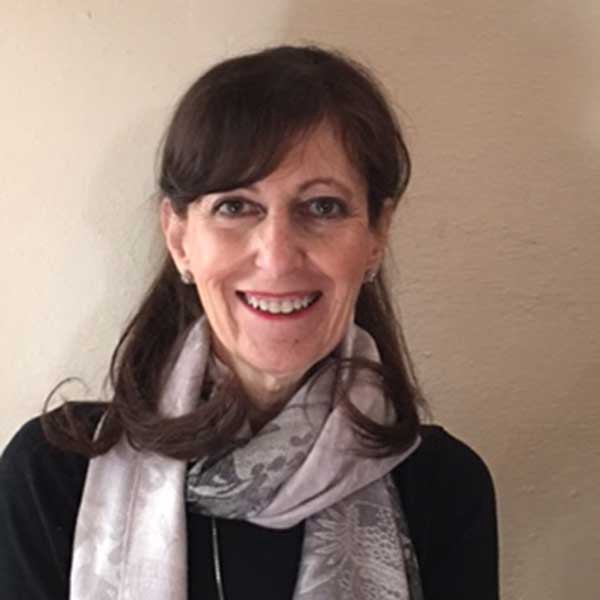

In a “flash mob,” people assemble in a public space to perform an ostensibly random act and then quickly disperse. The first successful attempt occurred in June 2003 in the home furnishing department of Macy’s in Manhattan as a social experiment, a public performance with no specific intent.
Flash mobs, at least in part, feel extemporaneous and fleeting. One facet of the successful flash mob is the illusion of spontaneity. There is an element of surprise when a nearby unnoticed person suddenly joins the action. Flash mob participants are embedded in the crowd. There is a conspiratorial quality of the flash mob easily neglected in the produced experience of the impromptu spectacle. Since the innocent days of the earliest flash mob, the media environment has been transformed. The conspiratorial nature of the flash mob can be easily weaponized by the hyper-connectivity of social media.
The seditious conspiracy charges against the Oath Keepers are based on the pre-planning of the mob’s invasion of the Capitol and the attempt to subvert the certification of the presidential vote. Case law (United States v. Lee, 1993) suggests that key to proving such a case is “unity of purpose,” the intent to achieve a common goal. The pre-Jan. 6 planning and the resulting “flash-like mob” become central to these charges.
Flash mobs rely on the overlapping of electronic connection and physical space. These spaces come together and co-exist in the use of mobile media in public mass gatherings such as the mob or flash mob that stormed the U.S. Capitol. Members of the Oath Keepers paramilitary group moving up the steps to the U.S. Capitol used an encrypted messaging app to transmit, “Arrest this assembly, we have probable cause for acts of treason, election fraud.” Allegedly, the Proud Boys used specific frequencies on Baofeng radios, Chinese-made devices that can be programmed for use on hundreds of frequencies, making it difficult for outsiders to eavesdrop. The use of Signal, an app for end -to- end encrypted messaging, was employed strategically.
The plethora of social media posts reveal coordination and a feedback loop among participants, organizers and even the then sitting president. Much social media-facilitated planning happened in closed, unmoderated groups, with potential violence openly discussed.
Nationwide, those charged include members of well-organized militias and far-right groups aware of the hybrid nature of the mob composed of the organized and the unwitting. There is evidence to support the fact that they intended to inflame the mob of ordinary people.
The made-for-television spectacle of Jan. 6, like the flash mob, represents not one isolated event but the culmination of mediated planning. The specific media environment is essential to establishing the elements of seditious conspiracy. A conspiracy is a secret agreement to commit an illegal act. The technologies of secrecy have grown exponentially.
The ability to communicate anonymously in closed, unmoderated online environments via encrypted channels is now one component of the digital media landscape. When is the apparently spontaneous, concealed plotting? How can law enforcement and laws adapt to a need to assume a hybrid reality lived at the intersection of electronic connection and physical space? To understand mobs and prove conspiracy requires acknowledgment of the inner workings of the technologies of secrecy.
Susan Drucker is the Lawrence Stessin Distinguished Professor of Journalism at Hofstra University’s Lawrence Herbert School of Communication, where she has taught for 33 years. Gary Gumpert is Professor Emeritus, Queens College, CUNY, and President Emeritus of the Urban Communication Foundation. They have written together for many years on media, law and public spaces, and they helped found the UCF.
